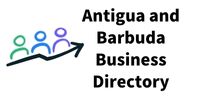The scam messages and phishing sites may closely resemble Facebook’s branding, but if you look closely, you’ll notice subtle indicators that make them fake.
1. Greeting is generic
Scam messages use generic greetings like ‘Dear user,’ but legitimate Facebook communication uses your name or username.
2. Typos and incorrect grammar
Typos and spelling/grammar errors are a huge red flag that the message is a scam. Communication from Facebook is professional and error-free.
3. Unreasonable threats and urgency
Scammers use unreasonable threats and create urgency that gambling data turkey compels you to act quickly without thinking things through. Facebook policy violations result in warnings and temporary restrictions – not immediate account disabling.
4. Personal information requests
Facebook will never ask for your password through an unsolicited message. Any request for login credentials or personal information is another red flag.
5. Fake links
Before clicking on a link, look closely at the embedded URL for extra words or is the email’s content written in a way that is overly promotional or misspellings that indicate a fake link. If you’re unsure, contact Facebook directly through their official help center.
What to Do if You’re a Victim of This Scam
If you suspect your Facebook account has been hacked by the ‘Violations Detected On Your Page’ scam or any other phishing attack, take these steps immediately:
- Log out of all active sessions – This will kick the scammers out of your account and prevent additional misuse.
- Change your password – Choose a new password that scammers can’t easily guess, preferably one you haven’t used anywhere else.
- Enable two-factor authentication – Adding another layer of verification by requiring an access code will prevent future hacks.
- Remove connected apps – Check and remove any suspicious or unknown third-party services linked to your account.
- Review recent posts and messages – Look over your feed and messages for any inappropriate or virus-infected content sent from your account while it was compromised. Report any suspicious posts.
- Submit your ID to Facebook – You’ll need to prove you’re the rightful account owner providing your ID to Facebook. Recovering access will take time.
- Warn your contacts – Alert your contacts of the hack and do not accept any messages that appear to come from your account until you resolve the issue.
- Perform an antivirus scan – If you suspect your device is infected with malware, run an antivirus scan.
Read More: Is Two-Factor Authentication Necessary for Your Business Social Accounts?
How to Avoid This Scam
Staying informed and diligent makes it harder to target you for this scam. Take these proactive steps to keep your account secure:
- Enable login verifications – To block unauthorized access, require an additional code with each login attempt.
- Use complex passwords – Each of your online accounts needs fax database a unique password that’s difficult to break.
- Ignore unsolicited messages – Don’t open random messages from unknown users and never click on included links.
- Report suspicious messages – If you receive an unusual message from Facebook, report it through the app.
- Review privacy settings – Decrease risks by restricting account sharing and visibility.
